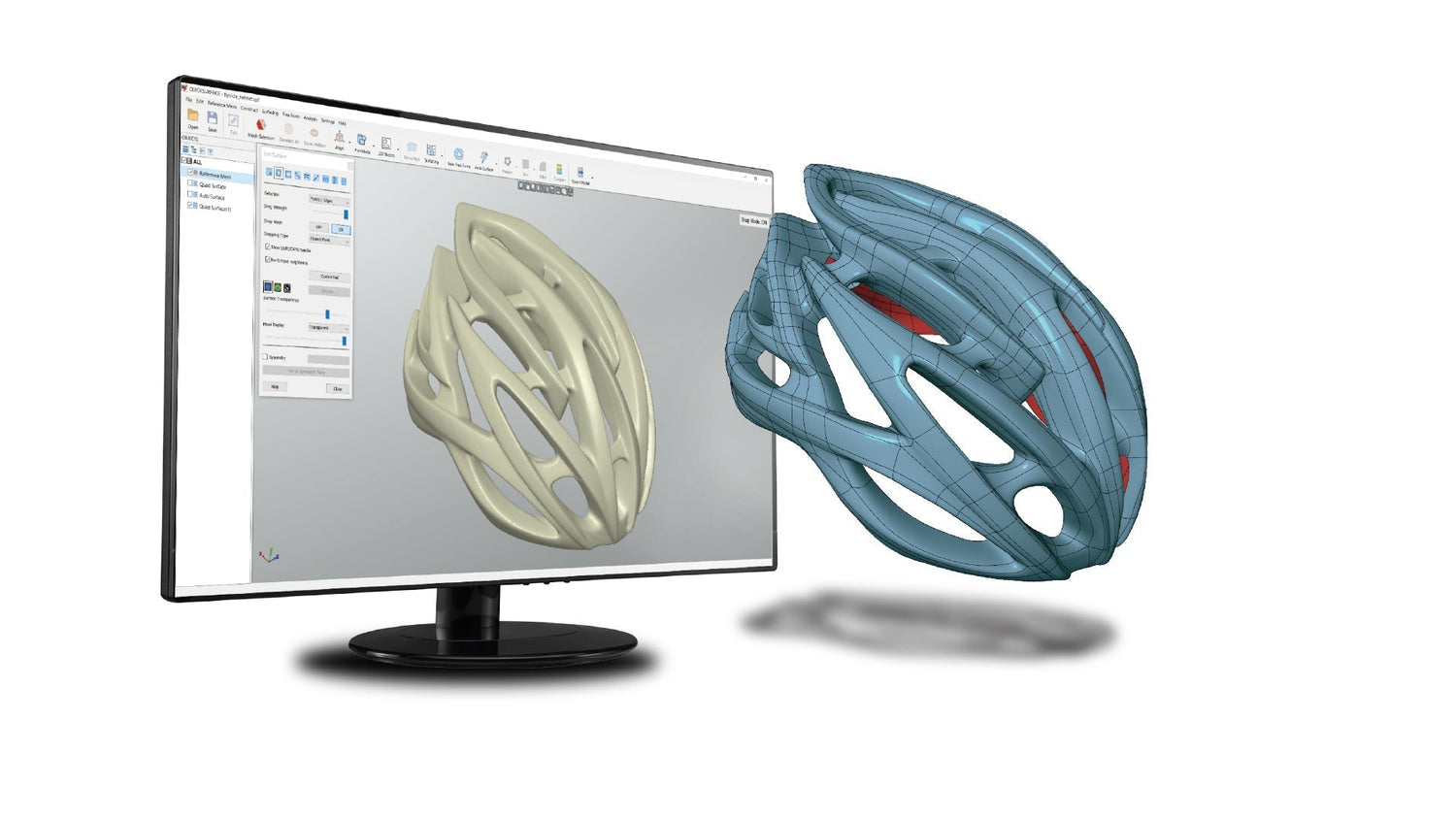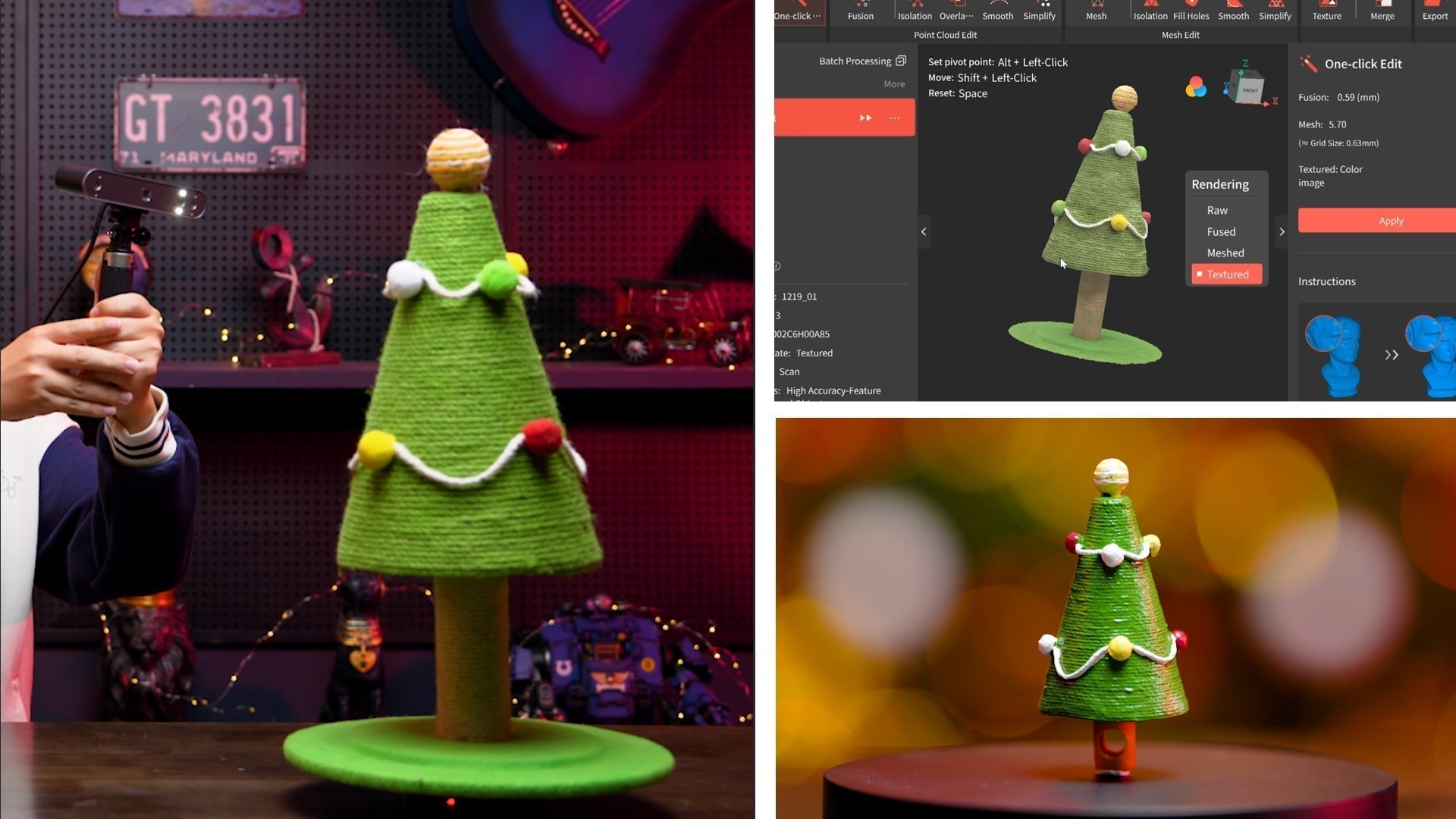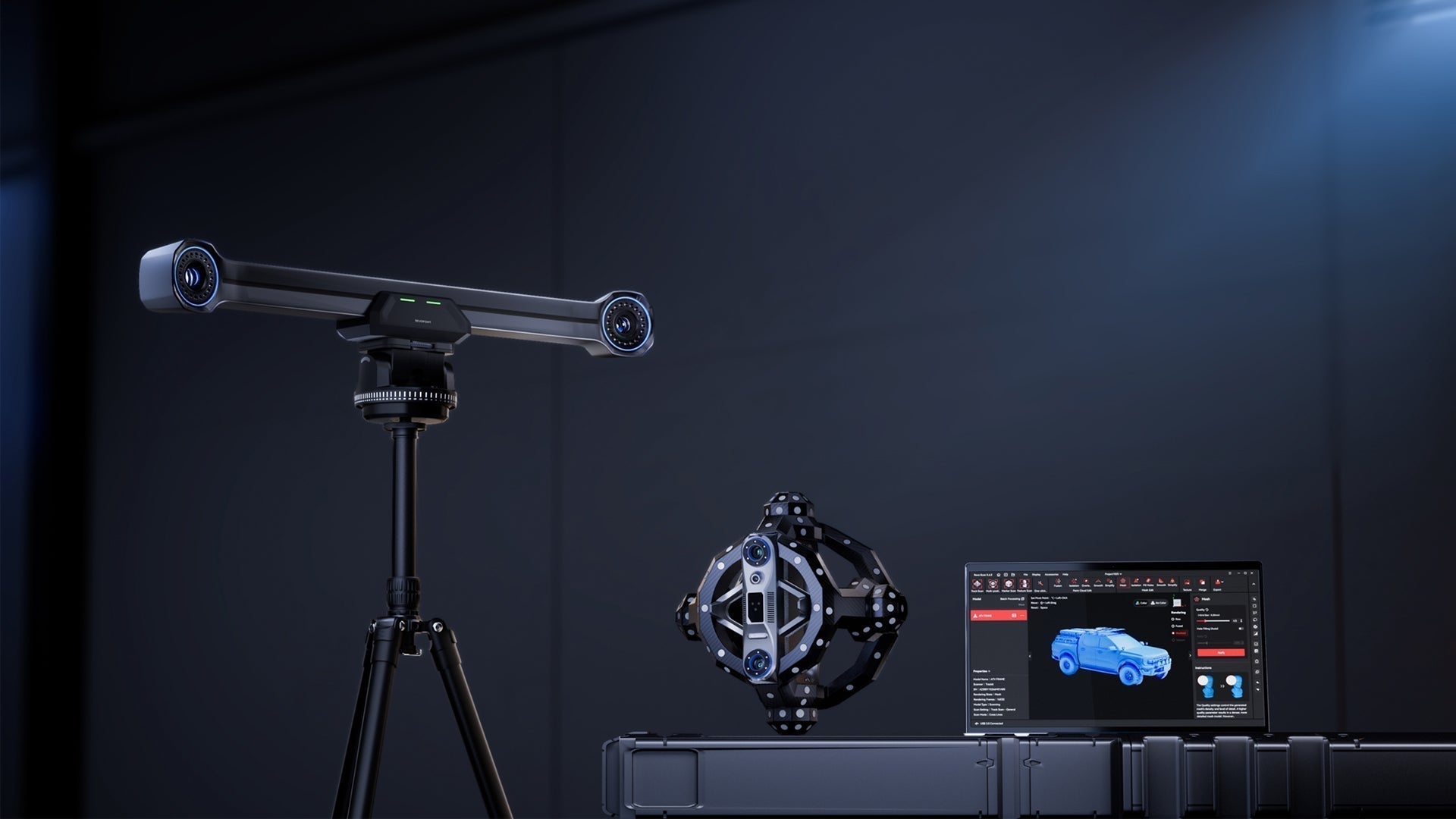In today’s fast-paced world of digital engineering and design, finding the best 3D scanner for CAD integration is key to staying ahead. Whether you’re an engineer, product designer, or digital artist, the ability to rapidly convert real-world objects into accurate, editable CAD models can transform your workflow. This guide compares top 3D scanners for CAD applications, highlights their benefits for reverse engineering and product modeling, and provides practical insights based on real-world usage. For those looking to optimize the design process—from prototyping to manufacturing—explore the best solutions available below.

Why 3D Scanning Matters for CAD
3D scanning technology digitizes physical objects with incredible accuracy, capturing every contour, dimension, and surface detail. The resulting mesh or point cloud can be seamlessly imported into CAD software, eliminating the need for manual measurements or tedious modeling from scratch. For anyone working in reverse engineering, quality inspection, or custom manufacturing, this means:
Significant time savings in design revisions and prototyping
Consistent accuracy for high-precision projects
Easy integration with popular CAD tools like IGES and STEP workflows
Modern 3D scanners can handle everything from tiny mechanical parts to large automotive assemblies, making them indispensable across industries such as aerospace, automotive, healthcare, and industrial design.
What to Look for in a 3D Scanner for CAD

When selecting a 3D scanner to complement your CAD projects, consider these essential criteria:
Accuracy & Precision: Look for scanners that offer sub-millimeter precision, ensuring your digital models are true to life.
Fused Point Distance (Resolution): High Fused Point Distance scanning captures finer details, which is crucial for intricate components or detailed reverse engineering.
Software Compatibility: Ensure the scanner outputs standard file formats (STL, OBJ, PLY) and integrates smoothly with CAD software.
Versatility: The best scanners adapt to various object sizes, surfaces, and scanning environments.
Ease of Use: Intuitive controls, portable design, and automatic post-processing save valuable engineering hours.
Comparing the Top 3D Scanners for CAD
The following 3D scanners are highly recommended for CAD workflows, offering reliable performance and seamless integration with design and engineering software. Key features and advantages are outlined below:

1. Revopoint MetroX – Blue Laser Precision for Demanding CAD Projects
Ideal for: Industrial design, reverse engineering, quality inspection
The MetroX stands out for its metrology-grade accuracy (up to 0.02 mm) and innovative blue laser technology, making it well-suited for capturing complex, shiny, or dark surfaces. MetroX offers fast scan speeds and flexible scanning modes, ensuring efficient and high-quality results for small to medium components. Files can be exported directly into CAD tools using formats such as IGES or STEP—especially via Revo Design—streamlining the workflow for product modeling and other professional applications.
MetroX demonstrates impressive capability in scanning reflective metal parts with minimal preparation required. The combination of multi-line laser technology and a turntable workflow significantly reduces reverse engineering time. Additionally, seamless integration with Revo Design allows for straightforward conversion and editing of scan data into CAD formats for various downstream applications.
2. MIRACO Plus – All-in-One Scanning and CAD Integration
Ideal for: Professionals needing portability and standalone operation
The MIRACO Plus is an all-in-one solution with a built-in display and photogrammetry kit. With a single-frame accuracy of 0.04 mm, it’s designed for both small and large objects. Its onboard processing means you can scan, edit, and export models for CAD anywhere—no PC required. The seamless workflow with Revo Design software lets you quickly generate watertight meshes and parametric models for direct CAD import.
MIRACO Plus provides essential support for on-site applications, enabling the scanning of large assemblies with immediate model review on its AMOLED touchscreen. The capability to export models in CAD-compatible formats streamlines collaboration across design teams, regardless of location.

3. POP 3 Plus – Versatile Scanning for Everyday CAD Tasks
Ideal for: Product design, education, prototyping
The POP 3 Plus offers portability and high single-frame accuracy (up to 0.08 mm), making it excellent for a wide variety of everyday engineering tasks. Its robust software ecosystem, including Revo Design, ensures that scanned models can be quickly refined and exported to CAD environments for further editing.
POP 3 Plus stands out for its user-friendly design, making it ideal for rapid design iterations and educational environments. With advanced color capture and editing tools, the transition from scanning to CAD can be completed efficiently in just a few steps.
4. INSPIRE – Budget-Friendly Entry to CAD Workflows
Ideal for: Beginners, education, creative prototyping
The INSPIRE scanner is a cost-effective way to start integrating 3D scanning with CAD. With up to 0.2 mm accuracy and compatibility with mobile devices, it’s ideal for students or entry-level designers looking to digitize objects for basic CAD modeling.
INSPIRE offers notable portability and ease of use, making it well-suited for quick concept modeling and educational projects. Transferring models into Revo Design for cleanup and export is a straightforward process, ensuring efficient workflow from scanning to final output.
In-Depth Overview: Revopoint’s Software Ecosystem for CAD

Revo Design: Streamlined CAD Model Creation
Revo Design is Revopoint’s dedicated CAD software solution tailored for users who want a straightforward approach from 3D scan to editable CAD models. Its intuitive interface enables users to import mesh data in formats such as STL, OBJ, and PLY, perform mesh editing, and quickly convert scans to parametric or free-form CAD surfaces. The software supports essential functions like mesh hole filling, smoothing, and outlier removal, ensuring that the scan is accurate and watertight before export. Revo Design’s ability to export high-quality models in IGES and STEP formats makes it a great fit for users working in industrial design, product development, or reverse engineering.
Revo Design delivers impressive efficiency with intuitive mesh editing tools and seamless export to standard CAD formats. It is well-suited for daily reverse engineering and product modeling tasks, establishing itself as a reliable default solution for a variety of applications.
QuickSurface Pro: Advanced Reverse Engineering Toolkit
For advanced needs, QuickSurface Pro stands out as a comprehensive hybrid parametric modeling solution. It goes beyond basic mesh editing and offers tools for automatic surfacing, Boolean operations, 2D and 3D sketching, deviation analysis, and real-time CAD comparison. Users can extract primitives like planes, cylinders, and spheres, perform free-form modeling, and leverage history-based modeling for complex parts. QuickSurface Pro’s robust deviation analysis ensures that the CAD reconstruction closely matches the original scan, which is critical in quality control and high-precision manufacturing.
QuickSurface Pro stands out with its comprehensive feature set and real-time deviation analyzer, which promptly identifies potential problem areas and significantly reduces the need for manual checks. This solution is particularly well-suited for intricate part reconstruction and projects requiring high-precision results.
Revo Scan 5: Unified Scanning & Post-Processing
Revo Scan 5 is Revopoint’s core scanning and post-processing software, supporting the entire workflow from object capture to model export. It enables scanning with various Revopoint devices, aligning and merging multiple scans, performing point cloud fusion, and post-processing meshes for optimal quality. Compatibility with Windows, macOS, Android, and iOS ensures flexibility across teams and environments.
The interface of Revo Scan 5 is designed to be intuitive, allowing even new users to navigate with ease. One-click post-processing and efficient multi-model merging streamline scan cleanup, minimizing manual effort. Direct integration with Revo Design and QuickSurface further enhances workflow efficiency, enabling a smooth transition from scanning to advanced editing.
Step-by-Step Tutorial: How to Import 3D Scan Data into CAD

Ready to take your 3D scan into your favorite CAD software? Here’s a walkthrough using the Revopoint ecosystem:
1. Capture and Prepare Your Scan
Scan your object using a Revopoint scanner and the Revo Scan 5 software. Use turntable or handheld mode as appropriate.
Post-process the scan in Revo Scan 5: align, clean, and fuse the point cloud. Fill any holes, smooth surfaces, and ensure the mesh is watertight.
Export the mesh in a universal format such as STL, OBJ, or PLY.
2. Import the Scan into Revo Design or QuickSurface
Open Revo Design or QuickSurface Pro.
Import your mesh by selecting File > Import and choosing your STL, OBJ, or PLY file.
Edit the mesh as needed: remove outliers, fill holes, and use the clipping box to isolate features.
Convert to CAD using the software’s surfacing tools:
For simple parts, use basic autosurfacing or primitives extraction.
For complex shapes, leverage free-form modeling and real-time deviation analysis for accuracy.
3. Export to CAD-Ready Formats
Export the processed model as IGES or STEP. Go to File > Export and select your desired format.
Open your primary CAD software (such as SolidWorks, Autodesk Inventor, Siemens NX, or CATIA).
Import the IGES/STEP file via File > Import or Open, depending on your CAD platform.
Finalize the model in your CAD software: apply constraints, dimensions, or further parametric edits as needed for your workflow.
4. Validate and Use
Run a deviation analysis (if available in your CAD software) to ensure the imported model matches the scanned geometry.
Integrate the model into your assemblies, perform simulations, or prepare technical drawings for manufacturing.
Taking a few extra minutes to clean up the mesh in Revo Design or QuickSurface prior to export can significantly reduce errors within the CAD workflow. IGES and STEP files import flawlessly, preserving critical features and facilitating straightforward downstream editing.
These software solutions and workflow steps are designed to ensure your journey from physical object to editable CAD model is as efficient and accurate as possible. With Revopoint’s integrated ecosystem, engineers and designers can confidently accelerate their product development cycles and deliver better results, faster.
Conclusion: Choosing the Best 3D Scanner for Your CAD Workflow

Selecting the best 3D scanner for CAD is less about finding the “most powerful” device and more about matching your workflow needs. Whether you’re reverse engineering industrial parts, designing prototypes, or teaching the next generation of engineers, modern 3D scanners offer the accuracy, speed, and compatibility required to streamline your design process.
Revopoint’s range—including MetroX, MIRACO Plus, POP 3 Plus, and INSPIRE—covers every application and budget, with seamless integration into CAD tools like Revo Design and QuickSurface. With these solutions, your path from physical object to digital design—and finally to manufacturable CAD—is more direct than ever.
Discover how 3D scanning can elevate your CAD workflow. Explore Revopoint’s solutions and find your ideal fit for the next generation of design and engineering.



Leave a comment
This site is protected by hCaptcha and the hCaptcha Privacy Policy and Terms of Service apply.